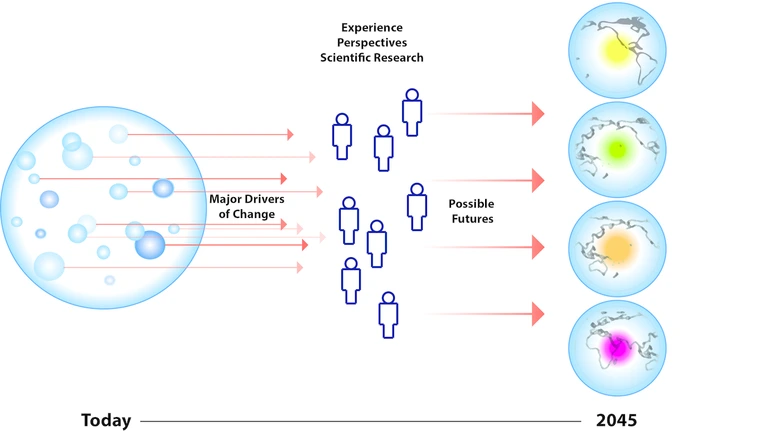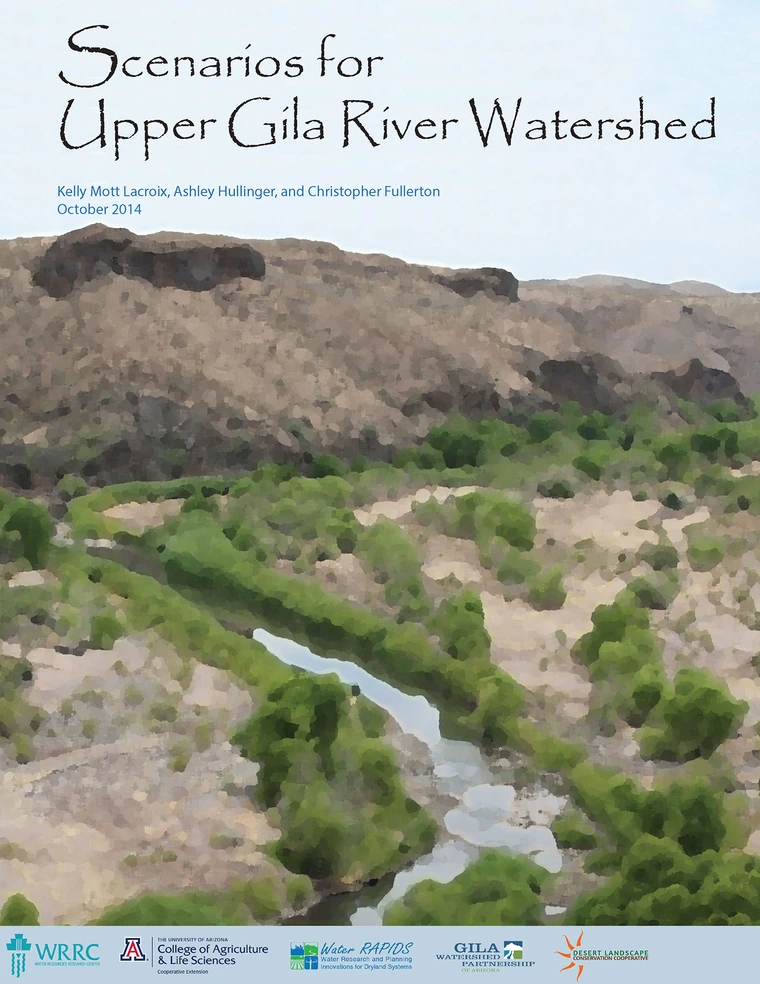
Scenarios are a tool that can be used to help us explore what might happen in the future as a way to make more informed decisions today. They are not an attempt to predict what the future will bring, rather an acceptance of uncertainty, and a way to prepare for the wide range of events that may come to pass.
Why Scenario Planning?
Thinking about the future before it arrives can help us make decisions today that will perform better over time by: 1) Providing insight into the forces that shape the system; 2) Revealing implications of following the status quo; 3) Exploring possible futures; and 4) Illuminating options for action.
How were the Scenarios for the Upper Gila Watershed Created?
From the start, the process of scenario planning in the Upper Gila Watershed has been approached from the perspective that “you must know where you’ve been to know where you’re going.” To help us think about the future, we worked with the Gila Watershed Partnership and the Watershed Restoration and Planning Steering Committee to compile the Atlas of the Upper Gila River Watershed, which examines the region’s natural, water, and cultural resources. Along with having a firm basis in the past and present, the scenarios are the product of a stakeholder-driven process that emphasized understanding what people were most concerned about for the future of the Upper Gila Watershed. Interviews with stakeholders were initially used to build a draft list of driving forces of change, which were then reviewed and refined at a full-day scenario planning workshop and a separate meeting with farmers and ranchers in the Watershed. At the workshop, participants created a problem statement, identified and ranked driving forces of change and discussed the most critical uncertainties for the future of the watershed. The WRRC then took the drivers and uncertainties and created the scenario narratives presented here. Participation and review from the Watershed Restoration and Planning Steering Committee throughout the scenario planning process were invaluable.
Possible future scenarios identified as having the most potential to impact the watershed:
- Approval of the New Mexico CAP diversion
- Arrival of the Tamarisk Leaf Beetle
- Shifting federal regulation of land and water resources
- Fluctuations in regional cotton prices
The four scenarios span the next 30 years, and demonstrate how the key drivers of change in the watershed are influenced and changed by the major uncertainties. The scenarios are written as stories to help the community think about what the future might look like and weave together information from interviews with people from the watershed and research on impacts to the watershed by elements such as tamarisk defoliation or prolonged drought. It is also important to note that while the future is full of many possibilities, these scenarios focus on likely and high-risk events that require extensive planning. For example, a return to average annual rainfall in the future is possible, but years of normal rainfall do not require the same amount of preparation as responding to prolonged drought.
Learn more about how to conduct a scenario planning process in your watershed


